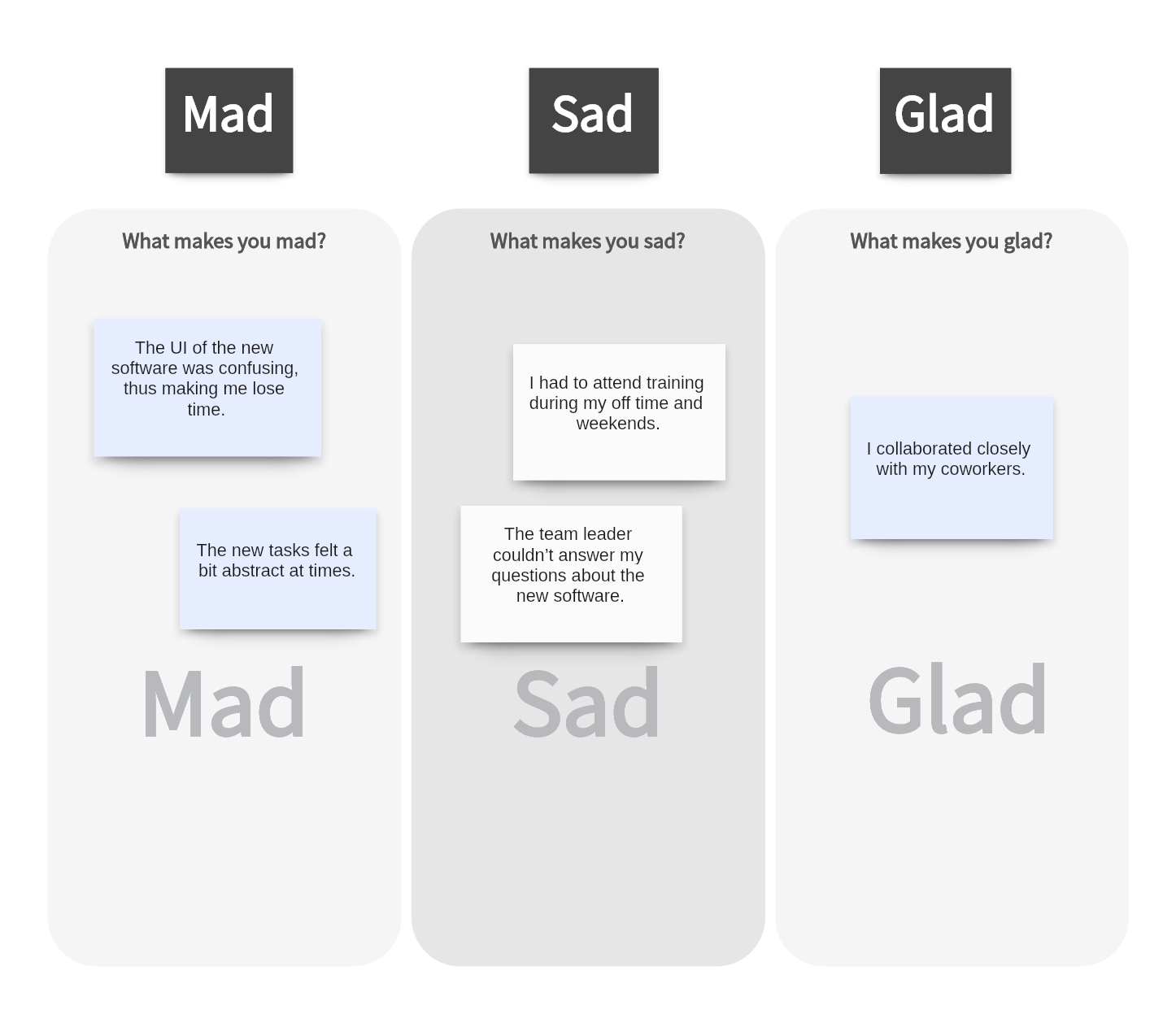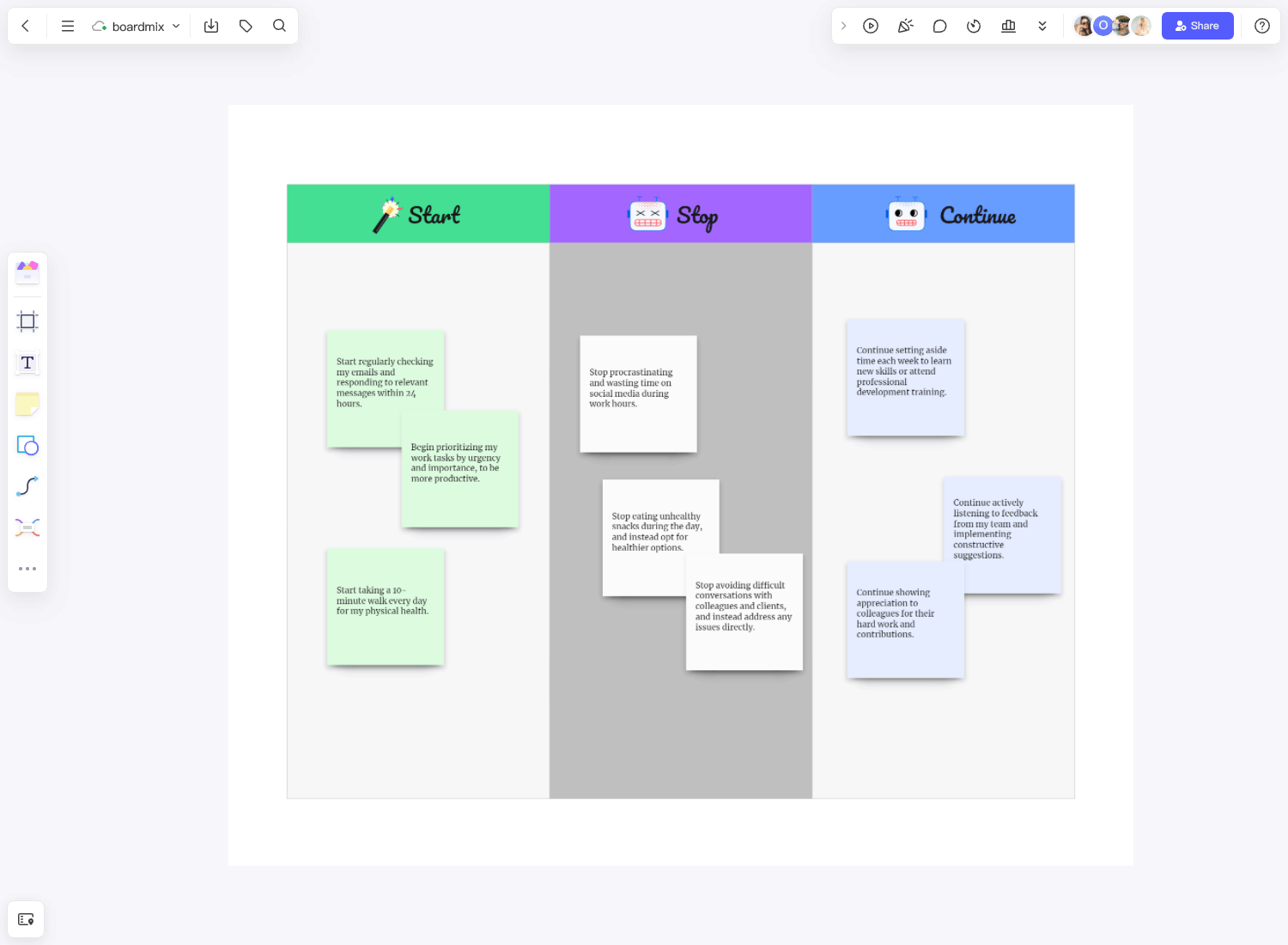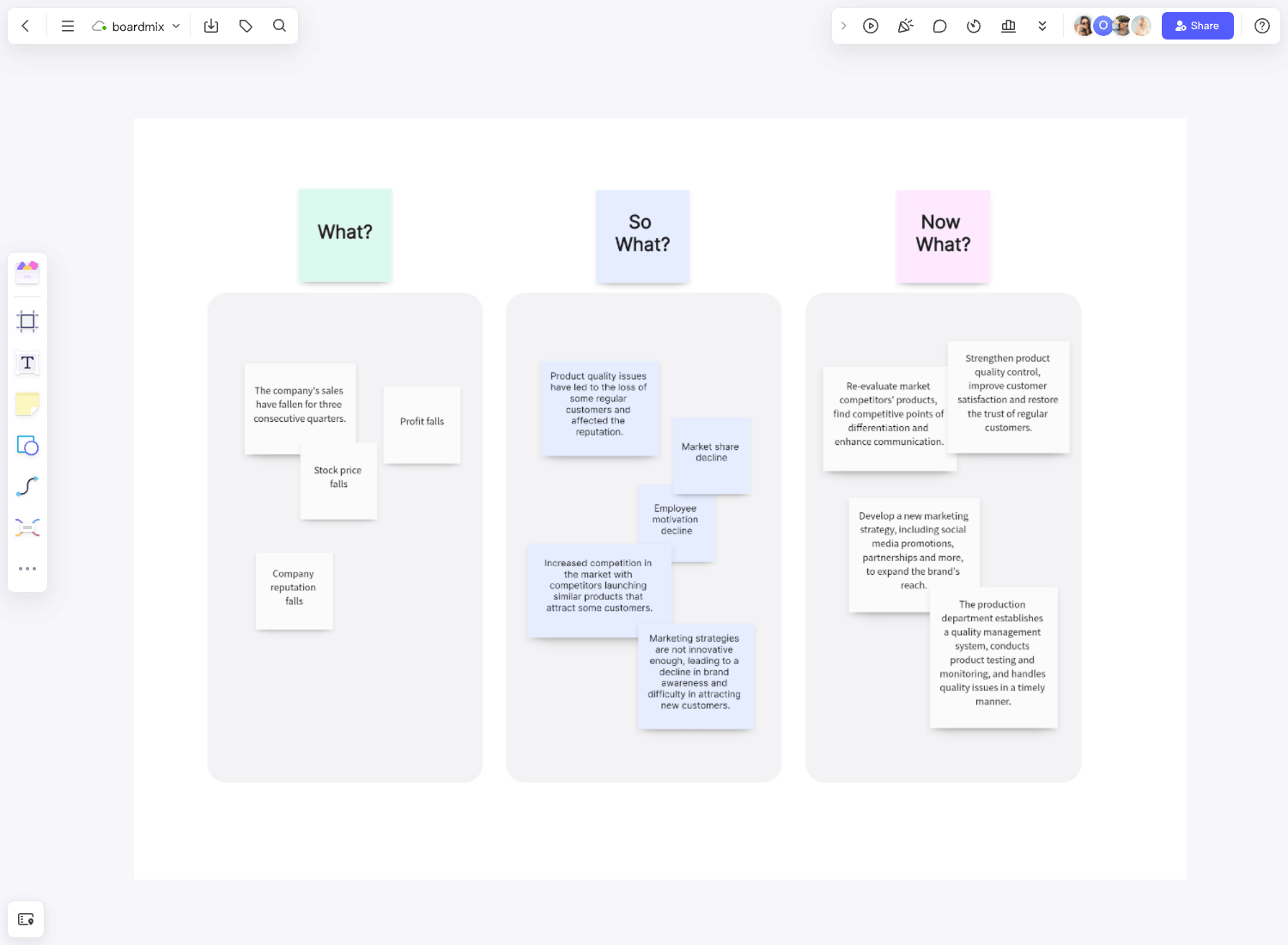The success of any team effort relies not only on technical skill and know-how but also on the morale and work satisfaction experienced by each team member while working on the project. This is why the Mad Sad Glad template is a valuable tool for evaluating a completed project. Instead of solely focusing on technical aspects, this retrospective delves into team members' emotional experiences, shedding light on improvement opportunities for future endeavors.
What is the Mad Sad Glad template?
This differs from the other methods typically used to evaluate a finished project. In this technique, each team member is encouraged to recall their experiences while working on the project and share the events that made them mad, sad, and glad.

While the discussions in this retrospective are centered mostly on emotions, it is very important to maintain an objective view during evaluation, focusing on behaviors, processes, and events instead of directing blame or making other team members feel guilty.
What is the mad sad glad exercise?
The Mad Sad Glad exercise is a retrospective activity that teams often use in agile project management to reflect on their emotions during a particular project phase or sprint. The exercise encourages team members to express their feelings under three categories: Mad, Sad, and Glad.
In the "Mad" category, team members share their frustrations and challenges they encountered during the project. This could be anything from technical hurdles, and communication issues, to conflicts within the team. It's an opportunity for everyone to vent and clear the air.
The "Sad" category allows team members to express disappointments or things that didn't go as planned. It's not just about pointing out failures, but also about understanding what led to those disappointments and how they can be avoided in the future.
Finally, the "Glad" category is all about celebrations. Here, team members share their successes, achievements, and things that made them happy during the project phase. It's an opportunity to recognize hard work and reinforce positive experiences.
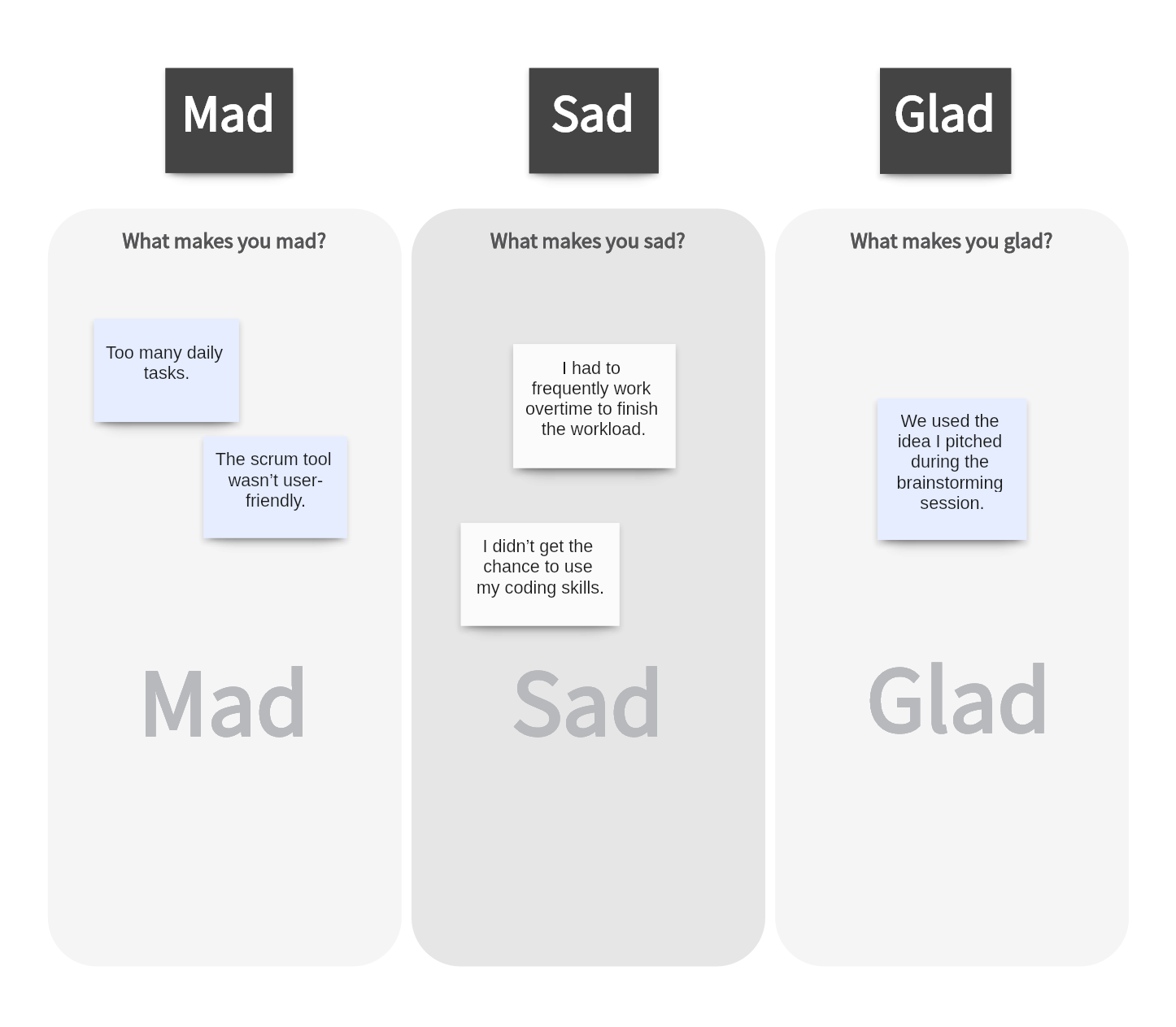
The purpose of this exercise is not only to provide a platform for emotional expression but also to identify areas for improvement. By understanding what makes team members mad, sad, or glad, project managers can make necessary adjustments to enhance team performance and satisfaction.
Benefits of using the Mad Sad Glad technique
This distinctive approach effectively draws feedback from team members and identifies areas for potential change or enhancement. It paves the way for a more productive future experience.
One of the most significant advantages of this technique is its simplicity. It doesn't demand any complex procedures or intricate tools. Instead, it's all about creating an atmosphere where everyone feels comfortable sharing their feelings, thereby promoting transparency within the team. This transparency is not just about expressing dissatisfaction but also about celebrating successes and acknowledging good work.
Another key benefit lies in its ability to uncover hidden issues. Often, there are underlying problems that go unnoticed because they're overshadowed by more pressing concerns. The Mad Sad Glad technique brings these issues to light, allowing teams to address them before they escalate into more significant problems.
Moreover, this method fosters continuous improvement by encouraging reflective thinking. It prompts team members to evaluate their performance critically and identify areas where they can improve. This introspection often leads to innovative solutions and strategies that can enhance productivity and efficiency.
Lastly, the Mad Sad Glad technique contributes to building stronger relationships among team members. Providing an avenue for honest communication helps in resolving conflicts and misunderstandings, thus strengthening bonds within the team.
In conclusion, the Mad Sad Glad technique is a powerful tool that can significantly enhance team dynamics and productivity. Its ability to promote open communication, uncover hidden issues, foster continuous improvement, and build stronger relationships makes it an invaluable asset in any agile environment.
Mad Sad Glad TemplateS
Below, we are going to give you several Mad Sad Glad examples that will give you an idea of what to expect from this agile retro method.
Mad Sad Glad Example – 01
One of the Mad Sad Glad examples that you might encounter is the one that you will see at the end of a sprint. In this case, there weren’t any changes within the team dynamics or the process. Therefore, the Mad Sad Glad retro allows you to evaluate the emotional impact of the existing process.
Mad
- Too many daily tasks,
- The scrum tool wasn’t user-friendly.
Sad
- I had to frequently work overtime to finish the workload,
- I didn’t get the chance to use my coding skills.
Glad
- We used the idea I pitched during the brainstorming session.

Mad Sad Glad Example – 02
Another instance of the Mad Sad Glad comes right after a merger. In this case, the team’s dynamics and organization have changed. Therefore, as a team manager, you should use this Mad Sad Glad retrospective template to find out how the sprint with the new team went.
Mad
- We lost so much time explaining the tasks to the new team members,
- Needed to attend too many meetings to get everyone on board.
Sad
- Some of my previous team members changed departments or left the company,
- I felt that my voice wasn’t heard enough by the new members.
Glad
- The new members brought much-needed expertise,
- My daily workload was reduced.

Mad Sad Glad Example – 03
The next Mad Sad Glad example comes from a team, where the process has changed. This might have happened because they have implemented new technologies or the management wants to try a new strategy.
Mad
- The UI of the new software was confusing, thus making me lose time,
- The new tasks felt a bit abstract at times.
Sad
- I had to attend training during my off time and weekends,
- The team leader couldn’t answer my questions about the new software.
Glad
- I collaborated closely with my coworkers.
When to use a Mad Sad Glad template?
The Mad Sad Glad template can be utilized at various stages of a project, but it is most effective when used during retrospectives, which are usually conducted at the end of each sprint or project phase. These retrospectives serve as a dedicated time for teams to reflect on their performance, discuss their feelings, and plan for improvements.
However, the usage of this template is not confined to these periods alone. It can be employed whenever there's a need for open communication within the team. For instance, if there's a significant change in the project scope or if the team encounters an unexpected challenge, it might be beneficial to conduct a Mad Sad Glad session. This will allow team members to express their emotions regarding the change or challenge and brainstorm solutions together.
Additionally, it can also be used after major milestones or achievements. Celebrating successes is just as important as addressing issues. Conducting a Mad Sad Glad session after reaching a milestone provides an opportunity to acknowledge the hard work of the team and reinforce positive behaviors.
In essence, there's no hard-and-fast rule about when to use the Mad Sad Glad template. It's a flexible tool that can be adapted according to the needs of your team and project. The key is to create an environment where everyone feels comfortable sharing their emotions and thoughts, thereby fostering transparency and continuous improvement.
How to run a Mad Sad Glad Retrospective?
The best way to implement this technique is to use a template with a pre-made and very organized structure, just like the one we have here at Boardmix. This way, you can concentrate on the members' input without worrying about setting up the format for the evaluation.
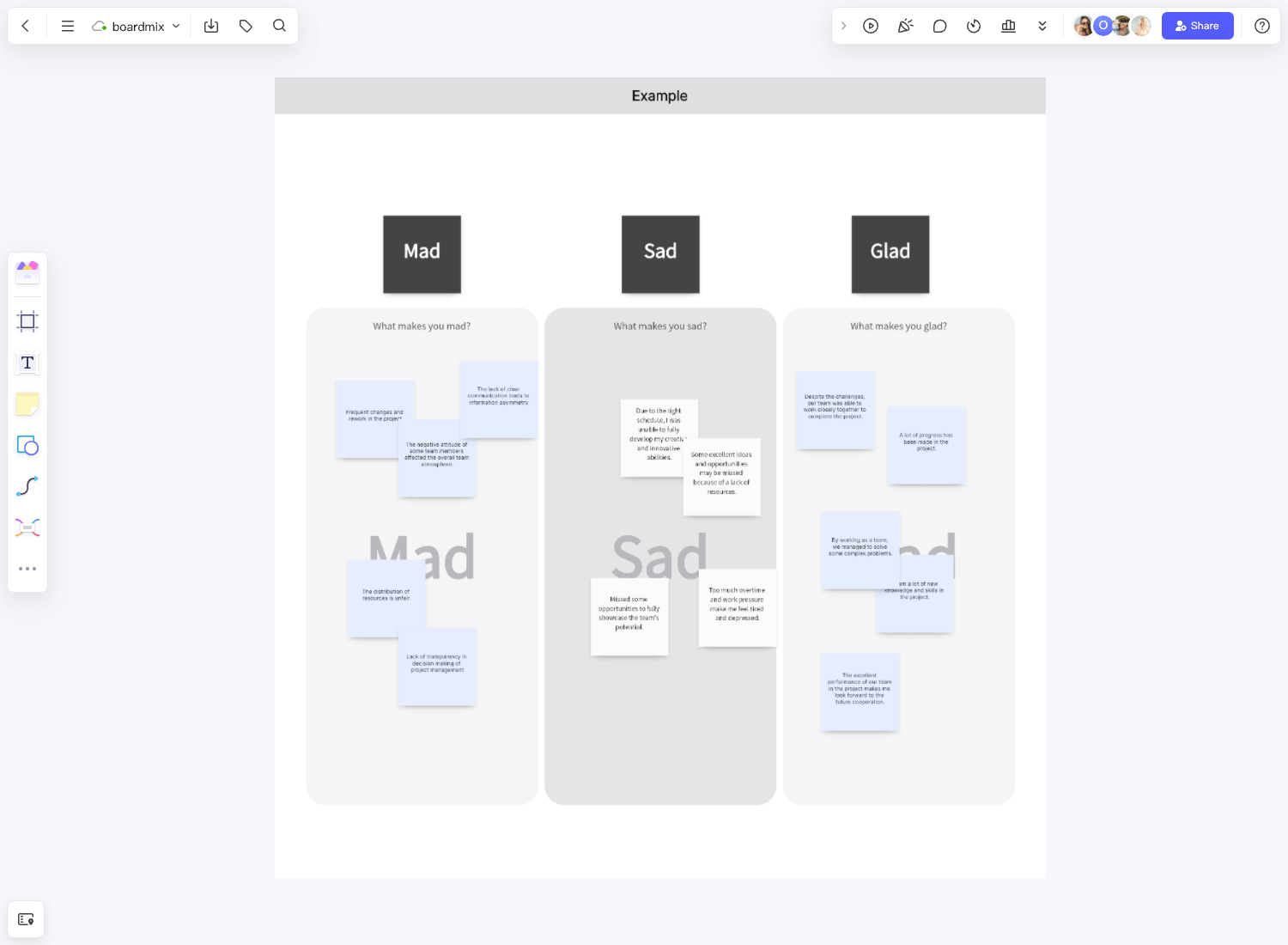
Once you have opened the template, you will see it is divided into three sections: Mad, Sad, and Glad. Each participant can add feedback to these columns using colored sticky notes.
The Mad section pertains to those experiences or processes that frustrated the members because it diminished the performance quality or caused delays in the process. The Sad section would include those experiences that caused disappointment in members. Perhaps expectations were unmet, in which case there could be a discussion on how this can be prevented in future sprints.
Finally, the Glad section would highlight experiences that made the members happy. This could span a wide range of experiences, from working with a particularly helpful teammate to using new software that speeds up the work. Anything that brings satisfaction and good vibes can be included in this section.
How to run a Mad Sad Glad Template in Boardmix?
Step 1 – Take advantage of Boardmix’s ready-made Mad Sad Glad retrospective template. The tool provides you with a rich library of templates, including one for Mad Sad Glad.
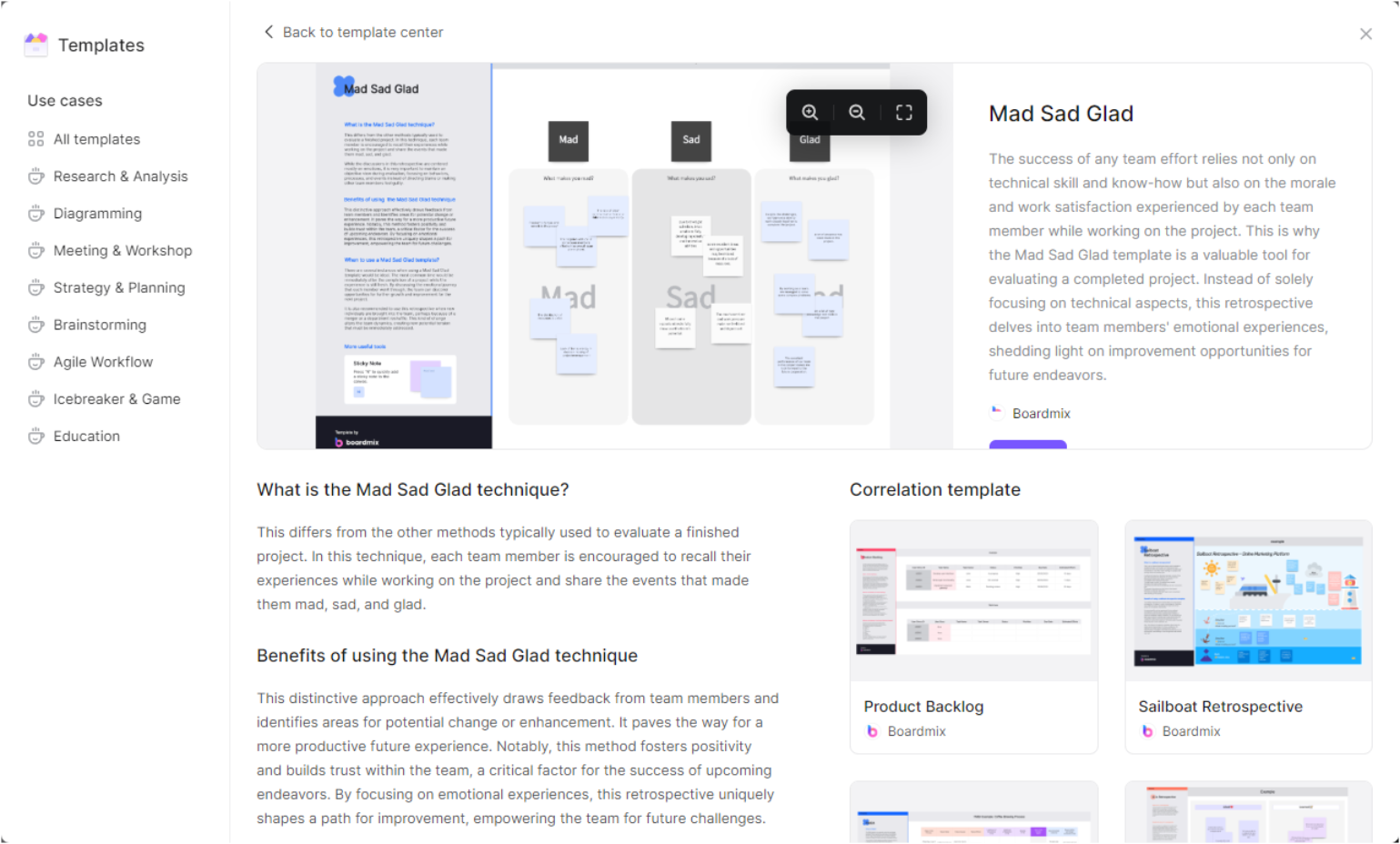
Step 2 – Make any changes you’d like on the template and then share the Mad Sad Glad retrospective with your team members. You can do that by clicking the Share button at the top of the screen.

Step 3 – Invite your team members to a video meeting or use the chat function on Boardmix.
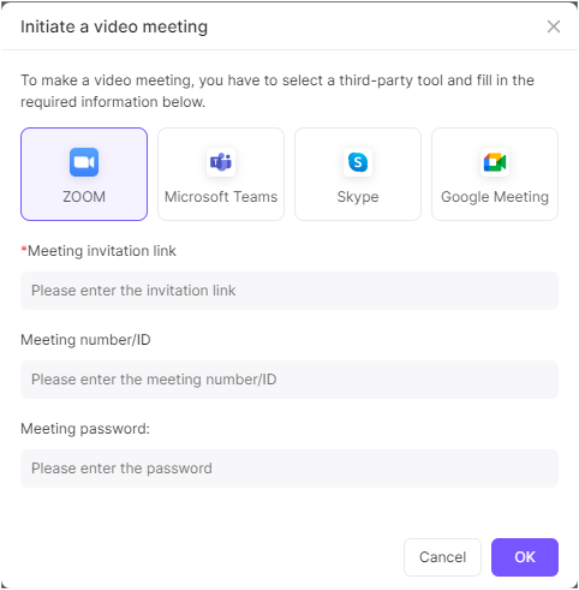
Step 4 – Start the meeting with some icebreaker questions, and then, move on to the Mad Sad Glad questions.
Step 5 – Give time to your team members to write down their answers on sticky notes that they can place in the corresponding columns. All changes in Boardmix become visible in real-time.
Step 6 – The Mad Sad Glad retrospective is automatically saved to your workspace. In addition to this, you can immediately share it with everyone involved, the management, and the shareholders. Moreover, you can save it as a PDF or any other file format that suits you.
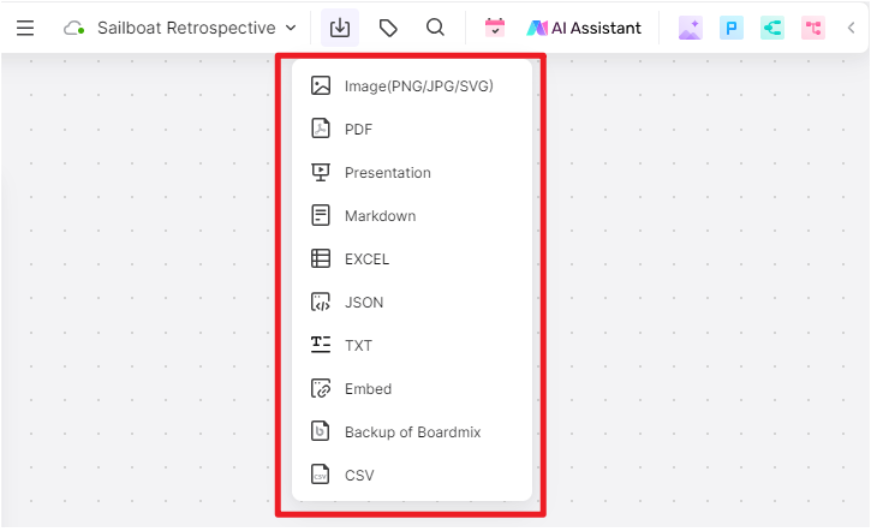
In conclusion, the Mad Sad Glad technique is about acknowledging that emotions play a crucial role in teamwork and that by giving them a voice, we can build stronger, more effective teams. It is an approach that champions emotional honesty, values every team member's perspective, and ultimately paves the way for continuous improvement and success. If you want to customize your template online, you can open the Boardmix website and find the template that meets your needs.




